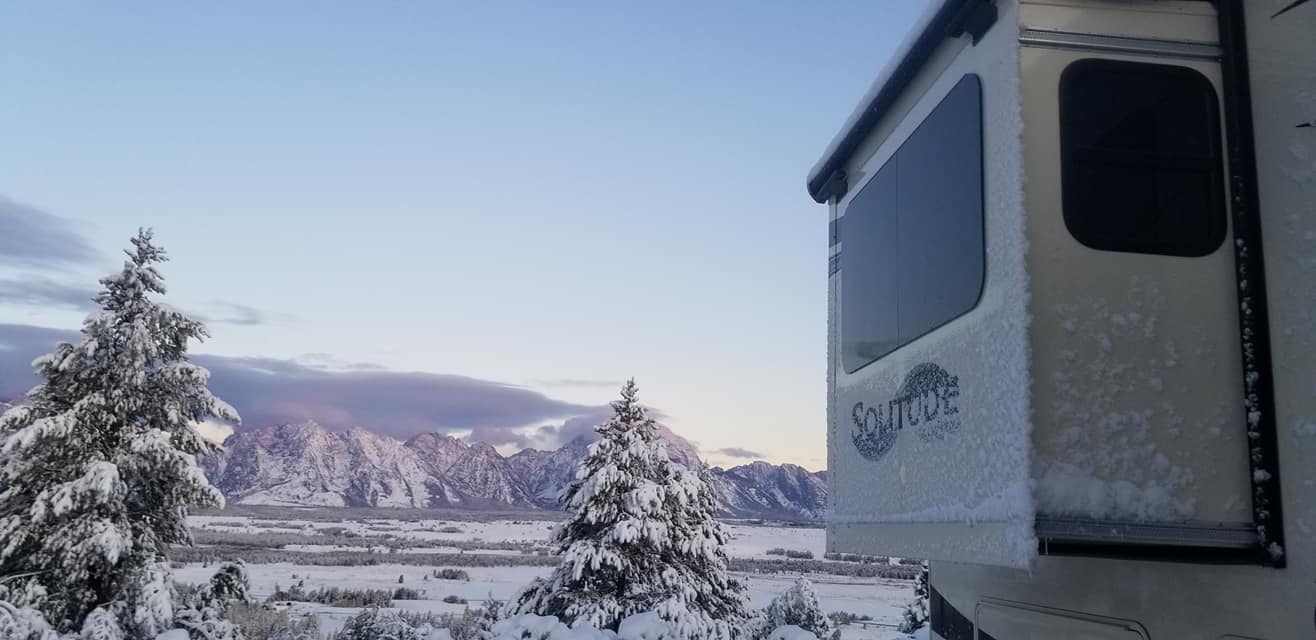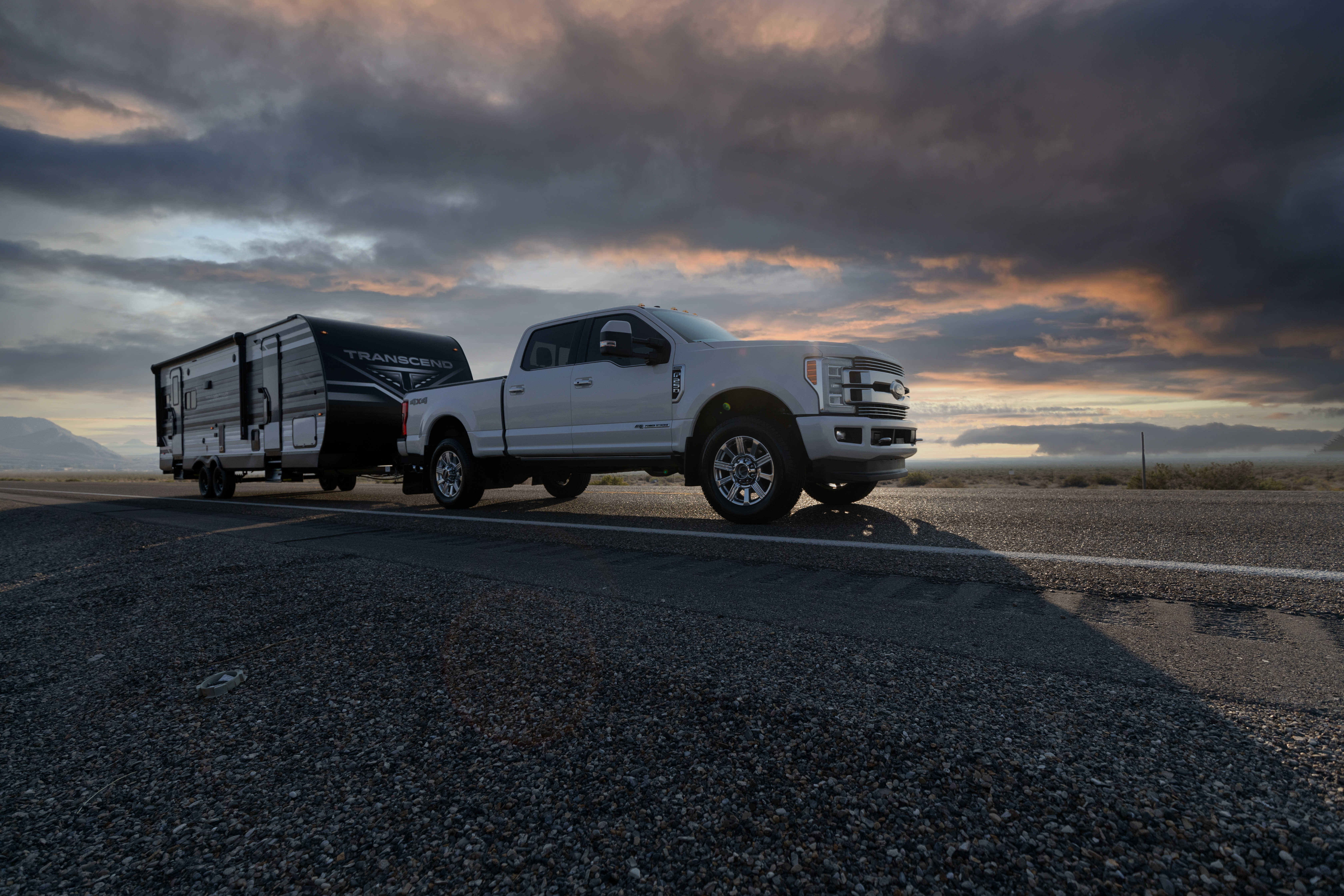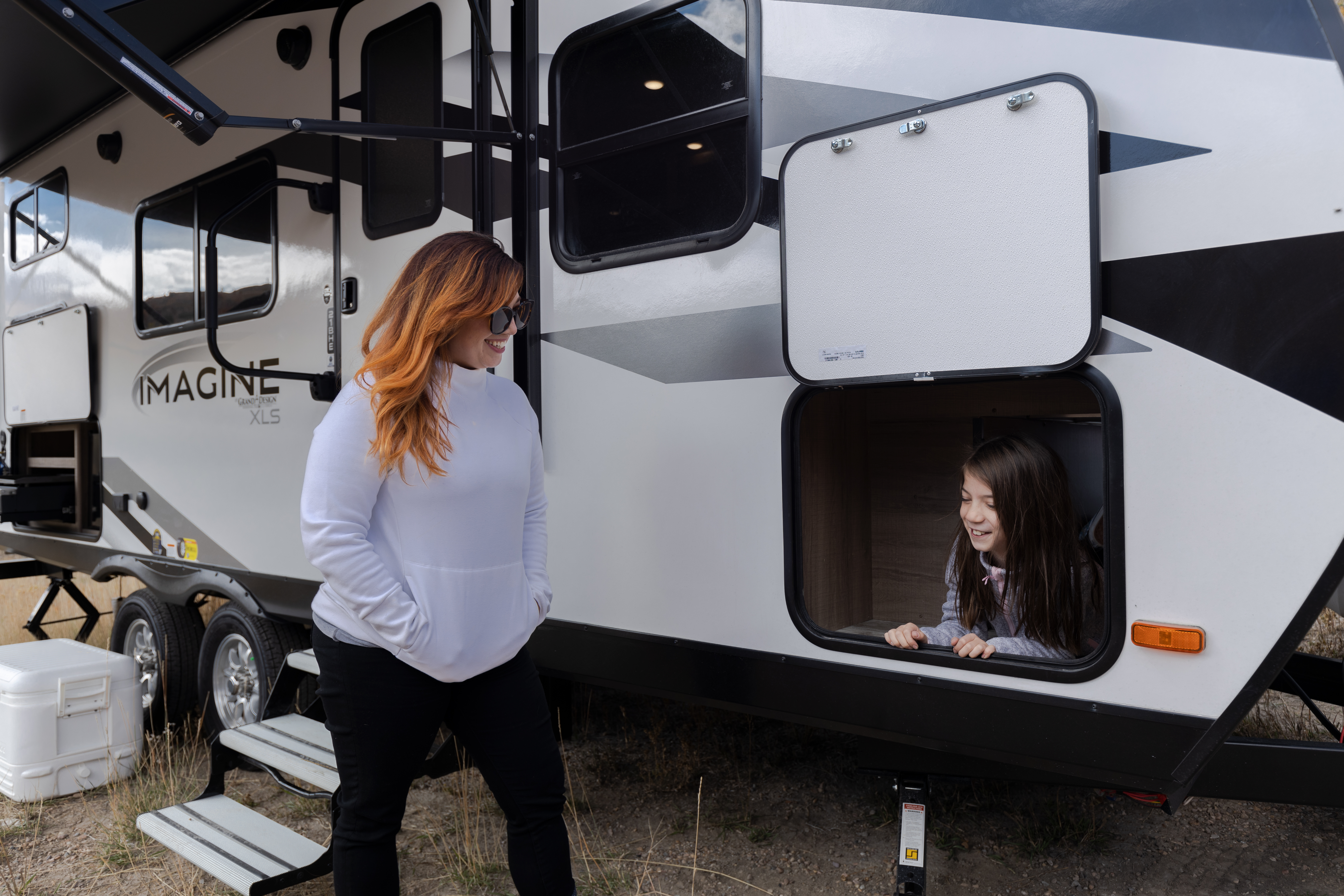LEARN
How to Load and Level Your New RV

For both your safety and the safety of others, it is crucial that you properly load and level your RV. An improperly loaded RV can sway and tip your RV over when traveling at high speeds - injuring you and others on the road.
When you get to camp, if you do not properly set up your RV, water sensors can malfunction and things may fall or break – or worse, your unhitched RV could roll away and hurt someone.
As you can see, it is your responsibility as an RV owner to protect others. Even a simple miscalculation could result in disaster. That’s why we created this checklist so you know how to load balance and level your RV.
How to Load Balance Your RV
- Check your RV manual for your RV weight sticker for the GVWR (gross vehicle weight rating) as well as the overall GAWR (gross axle weight rating); the sticker is found on the driver side at the front. This determines how much you are able to carry. Keep this in mind as you proceed with loading the RV. Do not exceed these numbers.
- Keep items you pack properly distributed throughout the RV, ensuring equal weight is put on the left and right sides. Remember: the ideal hitch weight for travel trailers and fifth wheels is 10-15%, and toy haulers is 15-20%.
- Make sure packed items are as close to the ground as possible to lower the center of gravity as you tow.
- It is recommended to load heavier items toward the front of the RV, but don't overload. We recommend going by the 60/40 rule, which simply means you should place 60% of the weight toward the front axle. (Your tongue weight should be 10-15% of your gross trailer weight. Less than 10% will result in sway. More than 15% will overload the rear wheels of the towing vehicle. Both are dangerous. Note: fifth wheels can be as high as 25%.)
- Secure items to prevent them from shifting during travel.
How to Level Your RV
What you need:
- A bubble level
- Wooden blocks
- Wheel chocks
- To level the camper left-to-right, place your bubble level right in the middle of the RV main floor.
- Roll forward and backward as you pull into the campsite (with someone else monitoring the bubble level). Aim to get as level left to right as possible as a starting point.
- If you are not level, pull forward or roll back the RV wheels (whichever is easier) onto wooden blocks to lift the left or right side of the RV. If you need the left side lifted, put blocks underneath the wheels on the left side of the RV. If you need the right side lifted, put blocks on the right.
- DO NOT UNHITCH. Grab your wheel chocks and place them on both sides of the wheel that is not lifted. This is to prevent the RV from rolling.
- Once the chocks are in place, it is safe to unhitch the RV from the tow vehicle.
- Use the bubble level once more to lower the RV fifth wheel landing jack or A-Frame jack onto blocks, adjusting the level front to back.
- Once it is level front to back, you may set up your stabilizing jacks to hold it in place. After this step, you may extend sliders if you have them.
If you need further information on towing your RV, check out this article. And don’t forget that the RV community is full of friendly experts that are more than happy to help you, whether that is your local RV dealer or a fellow RVer at camp. Just to be safe, print this checklist so you have it if you need it. Not everywhere is going to have cell service to view it again.
We hope this checklist is helpful and we wish you the happiest of travels with your new RV!




